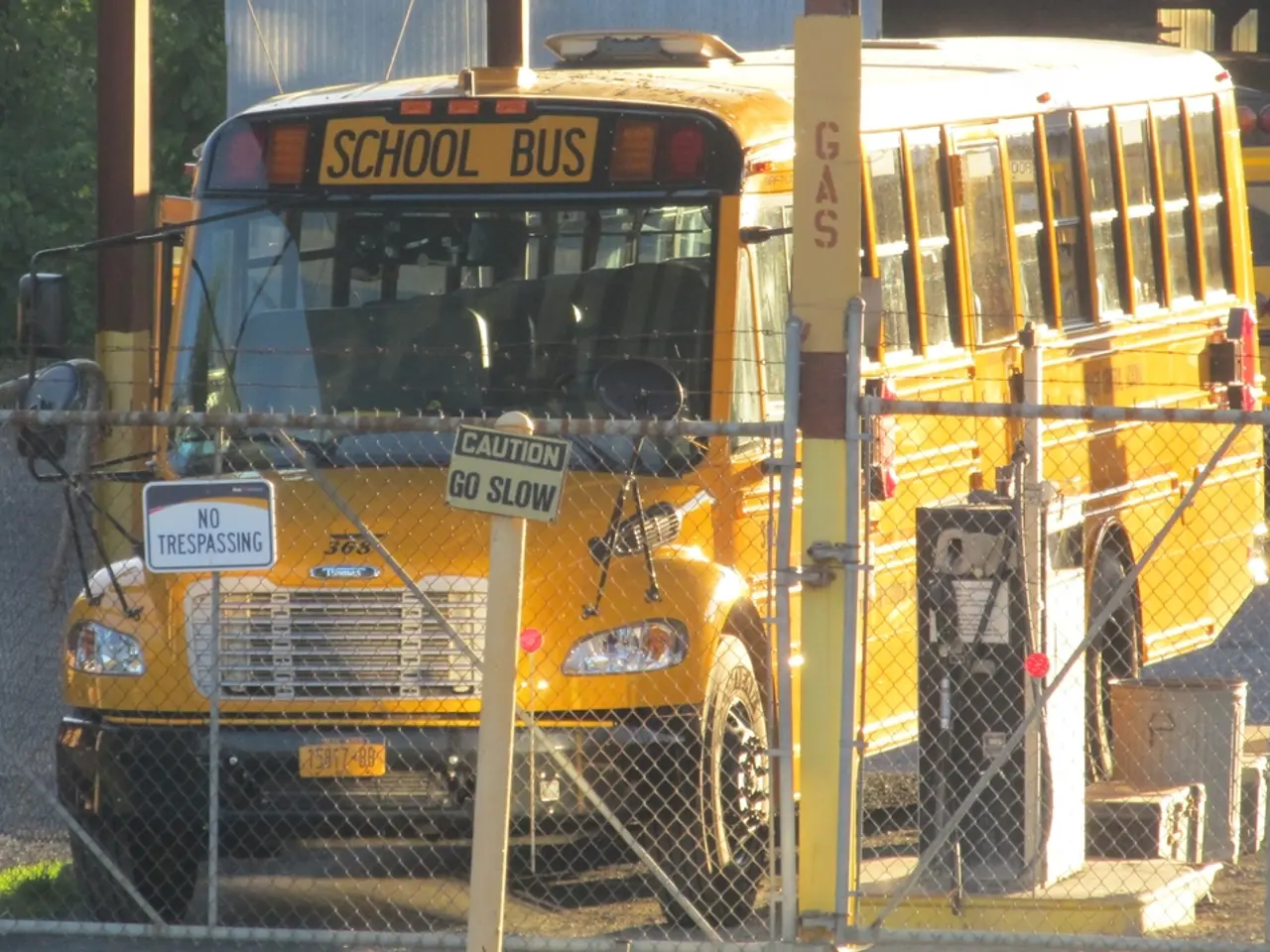Strengthened agreement between Kazakhstan and China for escalating road vehicle flow
In a significant step towards enhancing cross-border trade, passenger travel, and regional connectivity, Kazakhstan and China have agreed to increase border crossing capacity and forge a comprehensive strategic partnership.
Recent developments include the implementation of a mutual visa-free policy, which allows citizens of both countries to cross the border without a visa for up to 30 days per single crossing and stay up to 90 days cumulatively within 180 days. This policy has led to a significant surge in passenger crossings at the China-Kazakhstan border, with daily passenger buses increasing from about 20 to between 50 and 60[1].
To further strengthen connectivity, plans are underway to open two new border checkpoints: Terekty (Kazakhstan) – Aketubieke (China), and Narynkol (Kazakhstan) – Muzha’erte (China). These checkpoints aim to significantly increase both freight and passenger traffic, as well as boost cross-border tourism[4].
The strategic partnership between Kazakhstan and China is solidified by the Treaty of Permanent Good-Neighborliness, Friendship and Cooperation, signed during the Second China-Central Asia Summit in June 2025. This treaty encompasses cooperation in trade, investment, infrastructure, transportation, energy, and security, which inherently supports expanded border crossing capacities through stable and enhanced bilateral ties[2].
Moreover, a major logistics and industrial "Middle Corridor" super hub project, involving over $24 billion in investments, has been agreed upon. This hub is expected to boost regional transport and trade flows, implying further improvements in border infrastructure and capacity in the coming years[3].
Air traffic between the two countries is also expanding rapidly, with weekly passenger flights expected to more than double by the end of 2025[4].
On the ground, the Kazakh and Chinese delegations recently visited the "Nur Zholy" - "Horgos" border crossings to address issues with queues at the Chinese border. Decisions were made during the inspection of infrastructure on both sides, including the agreement to increase the throughput capacity to 1,000 vehicles per day at "Nur Zholy" by September, and to 300 at "Kalzhyt". The sides will also consider widening lanes and bridges at the crossing[5].
Additional measures include the introduction of mobile and stationary inspection complexes at the "Dulaty" and "Horgos" checkpoints, with X-ray images from both sides being recognized to reduce inspection times[5]. These new measures aim to further increase trade turnover and reduce queues at the border crossings.
Looking ahead, the operationalization of additional border checkpoints once approved by both sides will reduce congestion and increase throughput capacity for both freight and passengers. Continued infrastructure projects linked to the Middle Corridor hub and expanded air connectivity will supplement and integrate with border improvements to create a comprehensive transport network between China, Kazakhstan, and beyond to Europe[1][2][3][4].
The strategic treaty provides a stable legal and diplomatic foundation to support these developments, ensuring mutual trust, security cooperation, and economic integration. With these ambitious plans in motion, the future holds promise for a deeper economic, transport, and people-to-people link between Kazakhstan and China, and the wider region.
[1] https://www.xinhuanet.com/english/2025-03/15/c_136788883.htm [2] https://www.kazinform.kz/ru/news/25032025/2503202518136026.html [3] https://www.kazinform.kz/ru/news/25032025/2503202518136026.html [4] https://www.kazinform.kz/ru/news/25032025/2503202518136026.html [5] https://www.kazinform.kz/ru/news/25032025/2503202518136026.html
In alignment with strengthening transportation connections, the strategic partnership between Kazakhstan and China involves improvements in the logistics and industrial sector, with a multibillion-dollar "Middle Corridor" super hub project planned. This project aiming to boost regional transport and trade, will likely lead to further developments in border infrastructure and capacity.
To maintain financial stability and efficiency, these border improvements are anticipated to be supported by investments in innovative inspection technologies, such as mobile and stationary complexes with recognized X-ray images from both countries, designed to reduce inspection times and increase trade turnover.




